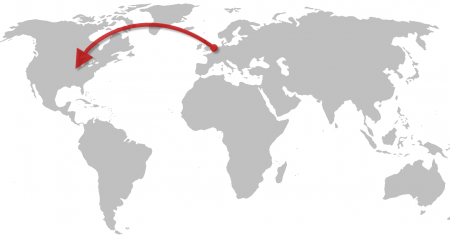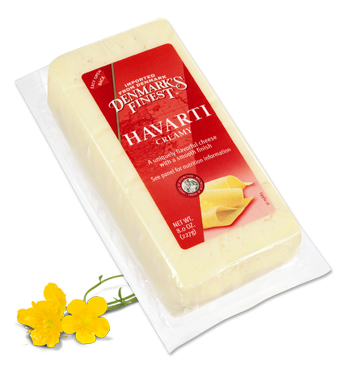Imported brands have challenges that ‘native’ American brands can’t imagine. To begin with, your branding is likely to be dictated by a global home office with little insight into the American market. And for many brands, although the U.S. looks like an enormous pot of opportunity, with, at last count, 682 different grocery chains, the splintered distribution system is simply baffling to a home office which is dictating your marketing budget. (We once had a marketing launch discussion with a client who said, “We’ll just do what we did in Australia.” “Oh?,” we queried, “what was that?” “Well, we sold into the two chains and that gave us 99% distribution.” Right. Conglomeration has run apace in the U.S., but we’re far from that dream.)
Another challenge is the lure of private label, when a chain doesn’t want your brand, but does want you to supply their private label product for them, in essence, pitting your own product against you. It’s hard to turn down the private label cashflow, but it does nothing for your own struggling brand.
Further, brands that are well-established and beloved in their own country often have a shock when they come to America as unknown. Marketing to people who have never heard of you, don’t know your quality, and may not know what your product is, can be a shock to well-established brands. And if you’ve spent the last half-century running reminder advertising, your introductory skill-set may be a little out of practice.
So what do you need to know to make a go of it?
Rule 1. The opportunity is huge. So is the investment you need to make.
Whatever your idea of a ‘big’ marketing budget is, America is a big country with a huge media market. The population of New York City — one single city — is 8 million at night and 16 million during the work day. That’s bigger than the population of many countries. So while the dream of selling to each of those people is tremendously exciting, you’re also competing with hundreds of thousands of brands with the same dream. Develop an investment budget with no expectation of return for the first year. Typically an intro budget should be 20% of ad/sales, but if you’re still working on distribution, or you have a product that is a stand-alone category, you may need to go higher – 30%. And if anyone tells you their campaign will be ‘self-funding’ from the sales it will generate, don’t believe them. You need to be prepared to dig in and invest. Which leads to our next point…
Rule 2. Consistency.
Regardless of the size of your budget, spend consistently against a defined target. If you have less than $500,000, target a single market and develop a plan that mixes high awareness and consistent messaging, as we did in San Francisco. Consumer branding to sustainable levels is a slow build. How slow? You need a 3 to 5 year commitment from the mother office.
Rule 3. Trial isn’t sales. It’s research.
Trial is seductive. It’s exciting to watch 20 people love your product — but guess what? Twenty minutes later they love another product. You have to back up your trial with awareness and branding messages, coupons, social outreach, and follow up. Consumers are fickle and have short memories and retailers move on to the next product sampling. If you have a product that is truly unique and needs explaining, mix trial into your introduction. But Americans are polite. A smile or nod doesn’t always equal a sale — and a sale this week when you’re on promotion doesn’t mean you’ve made it. The sales goal we talk about getting into the ‘wheelhouse’ for consumers — getting on that shopping list, becoming part of the weekly habit of the household, finding your way into the heart of a member of the family who is going to advocate for your purchase. Until that happens, think of trial as your research environment: do they understand the product? Do they know how to use it? How do they describe it? We had a sales team from German describe a cheese as tasting of “hay.” After extensive consumer trial, we gave them the feedback that “hay” is a negative but “meadow herbs and grasses” was broadly appealing. That research shifted their sales approach for much better results.
Rule 4. Use global assets conservatively.
You’ve seen this, right? The central marketing department in the home country creates a high-end campaign, spending millions on models, costumes, settings, lighting, music to create a gorgeous TV campaign. And you can’t use a second of it in the U.S. Because it’s reminder advertising. Everyone at home already knows the brand, understands the product, loves it, and knows where to buy it. They just have to be reminded. But once that product comes to the U.S., you’re starting all over. So take all those gorgeous global photos and repurpose the message for a U.S. consumer. For how American’s think, eat, and celebrate. New territory requires new tactics.
For website content and social media, hire local talent to develop the content. You not only need a site that’s hosted locally to boost your SEO, the cultural cues are almost impossible to get right if you’re not from here. We once saw recipes developed to help Americans celebrate Arbor Day and Flag Day. Clearly someone had read a calendar, but didn’t understand which of our holidays merit special attention — and which don’t.
Rule 5. Use your unusual.
You’re strange, unfamiliar, different…that’s good! Foodies are intrigued and eager to try new things. What they need is an introduction, a bit of information, and an opportunity to work you into their repertoire. Just give them time.


